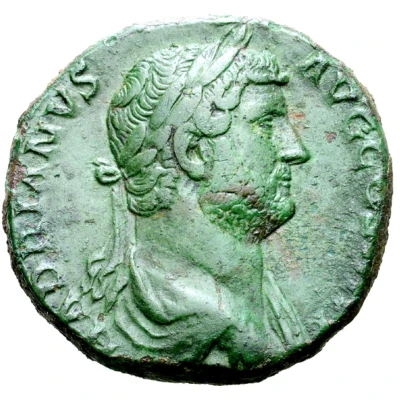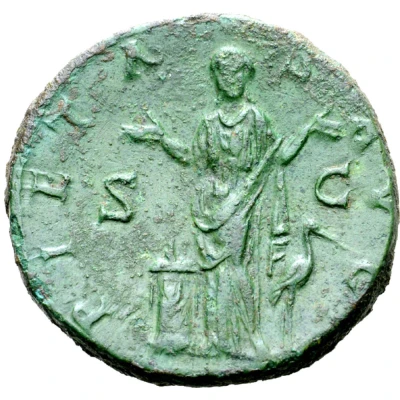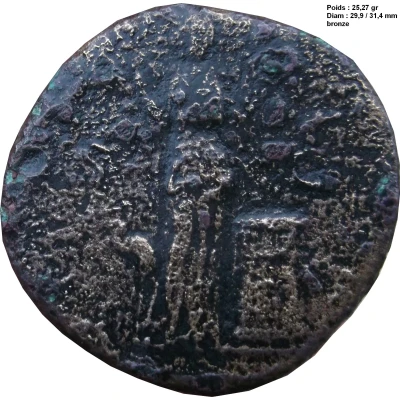Sestertius - Hadrian PIETAS AVG S C; Pietas
| Orichalcum | 25 g | 32.5 mm |
| Issuer | Rome › Roman Empire (27 BC - 395 AD) |
|---|---|
| Emperor | Hadrian (Publius Aelius Hadrianus) (117-138) |
| Type | Standard circulation coin |
| Years | 133-135 |
| Value | 1 Sestertius = ¼ Denarius |
| Currency | Denarius, Reform of Augustus (27 BC – AD 215) |
| Composition | Orichalcum |
| Weight | 25 g |
| Diameter | 32.5 mm |
| Shape | Round (irregular) |
| Technique | Hammered |
| Demonetized | Yes |
| Updated | 2024-10-06 |
| Numista | N#256608 |
|---|---|
| Rarity index | 100% |
Reverse
Pietas standing facing, sometimes head left, raising both hands; to left, altar; to right, stork.
Script: Latin
Lettering:
PIETAS AVG
S C
Translation:
Pietas Augusti. Senatus Consultum.
Piety of the Emperor. Decree of the senate.
Comment
Source: Online Coins of the Roman Empire (OCRE)Interesting fact
The Sestertius coin , which features the image of Emperor Hadrian and the inscription "PIETAS AVG S C," is notable for its use of the metal Orichalcum. Orichalcum was a type of brass alloy that was used in the production of some Roman coins during the 2nd and 3rd centuries AD. It was prized for its durability and resistance to corrosion, and was often used to produce coins that were meant to be used for long periods of time or that needed to withstand heavy use. The use of Orichalcum in the production of this coin speaks to the advanced metallurgical techniques and materials science knowledge of the ancient Romans.



